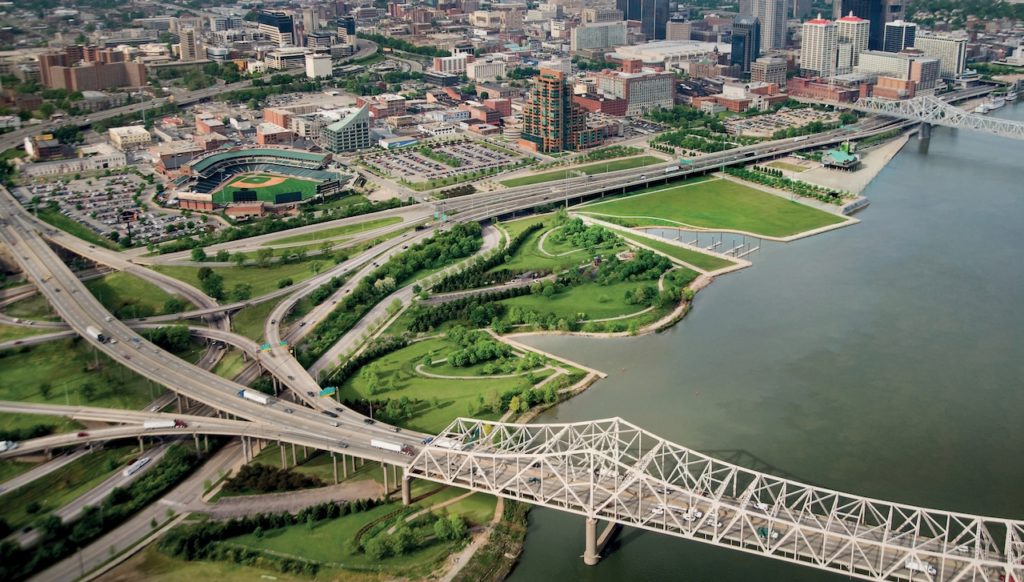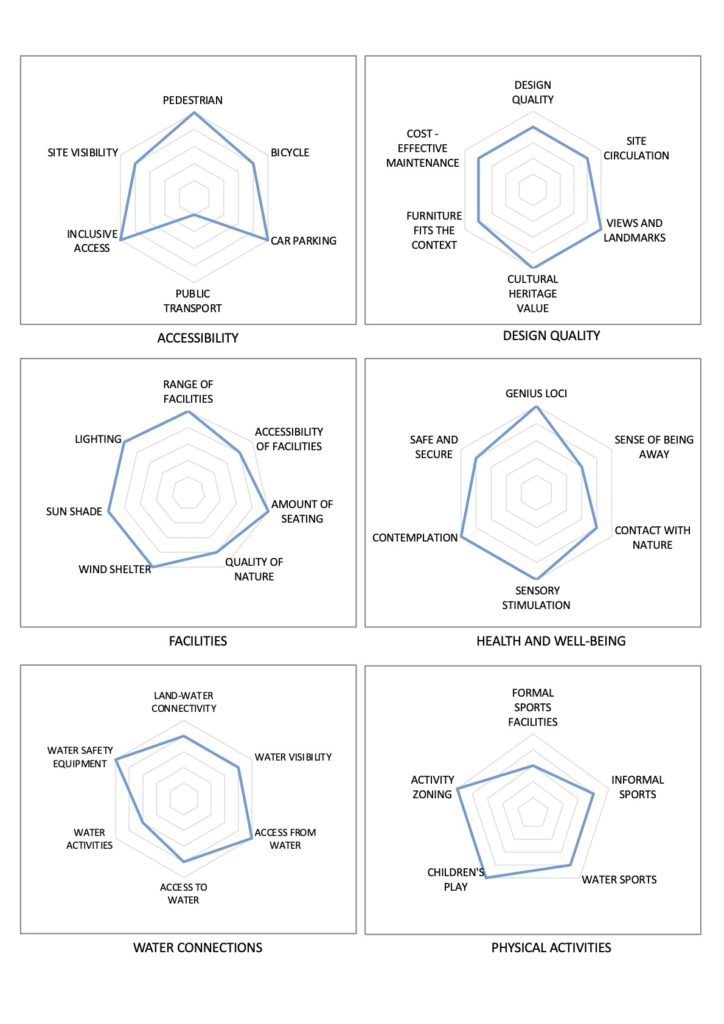
Architect
Hargreaves Jones
Joseph & Joseph
Type of Area
Large river with artificial banks
Land/water interaction
Terraces/steps
Promenade
Riprap
Built Environment Types
Completely built
Scale of Impact
City
Regional
Intervention Scale (Spatial)
Large site
Project Types
Riverfront development
Outdoor recreation
Public green space regeneration
Urban/ Rural
Inner urban area
Visibility and Openness
Fully enclosed
Fully contained view
From industrial wasteland to active use
Louisville Waterfront Park, Kentucky was developed in three phases from a previous industrial site. The aim was to reconnect the city to the water, which it had lost due to the heavy transportation network which ran along the riverbank. The Park preserves historical sites and tells the history of the place, the river, and the role the people of the city played in American history.
In essence, the overall aim of the park was to incorporate the waterfront cultural heritage into the present, to restore the ecology of the river and to increase the presence of the river in the city itself. The previously derelict waterfront therefore offers opportunities to reimagine public spaces and urban life beyond the boundaries of the immediate site.
The waterfront has become a conduit, providing a space for dynamic and exuberant public activities that engages with the structure and power of the Ohio River. The water park is designed in conjunction with the flow of the river and promotes an extensive use of the site through events, concerts, and festivals held in the open-air theatre.
Active use is encouraged through the network of pathways for cycling and walking and a children’s play area. The site is also suitable for boating and relaxing in the seated/dining areas where people can watch the river or take in the view. There are also pocket beaches, a promenade and piers giving different experiences. The site, however, is not popular at night unless there is a planned event or organised activities.
The Park lies within the flooding zone but is designed to withstand a flood event. It achieves this through slope stabilising construction methods, native planting, fast draining soil, use of durable material and bolted site furnishings. The lower banks are stabilised using geotextile, gabions, native planting and innovative landform design.
Terraces hide the parking spaces and open-up the views to the river while different tree species give added colour and texture throughout the year.
Perception and Meaning
Imageability
Legibility
Sense of place
Accessibility
Place identity
Health and Wellbeing
Place affordance
Increases socialisation
Aesthetic experience
Restorativeness
Increased physical activities
Interaction with Water
Visual

Website of the project:
http://www.hargreaves.com/work/louisville-waterfront-park/
Google map reference
The park is well connected to a pedestrian network and is wheelchair accessible. Multiple entry points with parking spaces connect the park to the adjacent road (River Road). The site is also accessible by boat from the river and a pedestrian bridge connects the park to the other side of the river (Indiana State). Attention to detail for withstanding flooding events means the overall design quality is high and in keeping with the context, in addition to ensuring that future costs are kept to a minimum.
As a city centre location, the range of facilities is therefore high whilst providing space for local residents and workers for de-stressing and contemplation. However, its proximity to the city and the openness of the site means that the sense of being away is low and it is rather exposed to the elements.
The cultural heritage value of the site is improved by making strong connections to the past through the preservation of historical features and by interpreting the role of the area within American history. This also gives the place an anchor and thus its genius loci. However, the sense of being away is limited.Connectivity to the water is modest but this is to be expected on a large and busy river; however, the large and open character provides plenty of space for children’s play and a wide range of informal sports which are well-organised according to different functional zones.
